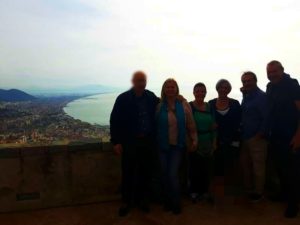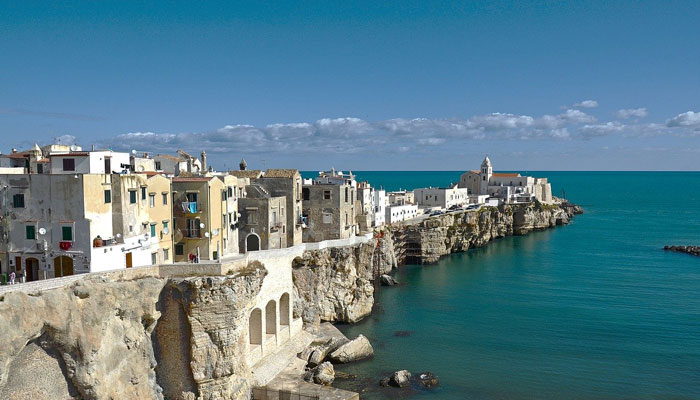The south of Italy holds many popular and hidden gems that all deserve to be visited and experienced but we all know how difficult it is to carve out a decent chunk of time from our busy lives to relax and reconnect with ourselves.
This is why I have put together a southern Italy itinerary which:
- Allows you to choose from various departure times every day, making it as flexible as possible for you
- Is ideal for families and/or small groups
- Provides a private and experienced tour guide for each part of this beautiful trip down south
- Don’t feel like visiting all the places I suggest below? No problem, your tour can be fully customized to your specific needs and interests ahead of time.
4 days might not seem like many but it depends on your point of view. How we experience such a short holiday is what is most important and we will do our best to optimize and customize your schedule to get the most out of it and create a few unforgettable memories of your trip to Italy. It’s worth noting that I am from the area and the best part about a local guide is that you actually CAN get straight to the essence of a culture even in a short amount of time.
Using a car, we will explore the south of Italy and all its beautiful aspects: art, food, wine, traditions, culture and nature, all in just 4 days!
Day 1 – Pompei, Alberobello and a night visit to Lecce including a stay in the city’s most beautiful hotel
Our trip begins with a meeting by the entrance of Pompeii where a private local tour guide will give us an unforgettable walking tour of this UNESCO world heritage site.
We will stroll through the ancient city once buried by a blanked of ash and lapilli coming from the Vesuvio’s sudden eruption in 79 A.D. Pompei was only uncovered 1700 years later and almost as if by an enchantment, remained a crystallization, depicting the last moments of a typical day in the early imperial age.
As you walk through the city, you will hear how in 79 A.D, the Vesuvius erupted and killed 20,000 inhabitants of this Roman city with its lava on a summer’s day as if it were any other. Almost 2000 years later, the ruins of shops and the streets conserved by the lava leave us with a fascinating panorama of what a typical day in ancient Roman life looked like.
- Admire the ancient walls of the city as well as its harbor and take a stroll through the ruins which have been petrified in time a long time ago to see the main sites.
- Explore the center of Pompeii which is just as impressive as the Roman Forums and let yourself be enchanted by the stories of daily life as you walk along the roads, through the plazas and by the old shops and buildings.
- Observe the blocks of stone covered in slurry that once served as stairs connecting the city and admire unforgettable monuments such as Apollo’s Temple, the “Macellum” Market and the public scales.
- Visit the ruins of bakeries and typical stone markets of the era when food and drink was once kept in pots where people would have stopped by for a snack throughout their day.
- See the molds of victims within the Forum of Pompei and visit other important ruins like the Baths (where residents would socialize whilst bathing) and the “Lupanare”, a brothel containing splendid frescoes that can still be seen today.
- You will also visit one of Pompei’s theatres where the masses would gather to enjoy performances from bloody gladiator battles to games and spectacles.
After our trip to Pompei, we will stop for an aperitif and some lunch in local restaurants serving freshly caught fish of the day as well as meats, vegetables and fruits grown in the area.
On we go to Lecce…
Once in Salento, the city of Lecce is a must-see.
We are in the south folks, far down south. Let’s suppose you’ve decided to visit in the summer, some light luggage, a pair of comfortable sandals and a large hat to protect you from the sun are more than enough to visit this beautiful city.
We will be proceeding towards the center of the baroque city and let ourselves be wound up by its people and their welcoming spirits and hospitality which define it. You will be able to admire Lecce’s white limestone which was used to construct most of the structures we will be visiting. We will enjoy a stupendous view of the Roman amphitheater’s arena and at the same time be astounded by the scents of fresh bread, Lecce’s famous “pizzi” – Lecce’s garnished olive, onion or caper breads – and a cup of freshly ground coffee served in Lecce’s summer version: with a drop of almond milk and ice.
I’ve organized for you to stay in the city’s most beautiful hotel before continuing our trip to Gallipoli the following day.
Day 2 – Gallipoli, Otranto, Wine-Tasting, Olive Groves, the Beautiful and more…
Our sensory tour will take us from the tasting of wines and typical Salentine dishes to the discovery of rural architecture, calm waters and splendid white beaches.
Discovering the city of Gallipoli…
Gallipoli is a city on the ionic coast which shows clear signs of Greek roots and history. Our tour will take us through the picturesque fish market by the harbor to see fisher’s traps and filled nets and through the typical narrow alleyways of the historical center.
If there is one thing we must do here, it is to stop to have lunch in one of the many “trattorie” along the sea to enjoy a plate of “frutti di mare” cold seafood with a dash of lemon accompanied by a glass of ice-cold white wine from the area. If you are curious, we can sample a plate of sea urchins, oysters and a plate of various fried seafood to make for an unforgettable taste of the area.
Gallipoli was once a very wealthy city. In 1600, ship after ship would unload barrels of Salentine olive oil to even the northern-most European cities on a daily basis. This city was one of few producers and their oil’s quality was very high. So high, in fact, that it was listed in London’s stock market at the time. Nonetheless only very few rich families oversaw and profited from its production, while the majority of the population suffered at the hand of the wealthy. Most of these big families lived in huge buildings and had dug underground oil mills beneath them, where poor laborers were kept calm with camomille tea to have them work day and night just to keep this lucrative business going. Several of these buildings have been transformed into luxurious resorts but many of the oil mills remain preserved for us to see during our visit of the city.
Otranto
After a typical lunch in Gallipoli we will proceed to Otranto, the most eastern city of the entire Italian peninsula and one of the country’s jewels which is absolutely worth visiting.
Its narrow streets are aligned with retro-style boutiques displaying handicraft you can’t find anywhere else in the world. No one has ever left the city without first purchasing at least a pair of handmade leather sandals, a handbag, a crochet bikini or a typical doll made from local ceramic. At the city’s highest point we will have the possibility to visit the cathedral and its striking scenic interior: a beautiful and mysterious floor mosaic and the chapel containing the bones of the 800 martyrs from Otranto, killed by the invading Turks 500 years ago for refusing to deny their faith and convert to Islamism. To top it all off, Otranto is one of the cities in Puglia and all of Italy to have received the most recognition for its beauty, the cleanest seawater as well as for its services and accessibility to visitors.
“La Quercia Vallonea”
On the way back from Otranto you will discover that there is also world of monumental trees in Salento and among them are some very rare ones. While the region of Puglia is well-known for its olive trees, it is also home to an imposing natural beauty: the “Quercia Vallonea”, also known as “La Quercia dei 100 Cavalieri” (The Oak of the 100 cavaliers). At 19 meters height and 900 years of age this tree is one of the oldest and biggest of its kind. According to legend, it was big enough to shade Federico II and his 100 men from the scorching sun while in transit. On request we can gladly make a pit-stop to admire this one-of-a-kind tree as it is on the way to our next stay.
We will tuck in for the night at one of the old farms in the area which has been restructured into a welcoming residence. Here you will be able to savor the essence of the region through organic products accompanied by excellent wine produced in the area.
REAL EXPERIENCES


Lascia un commento